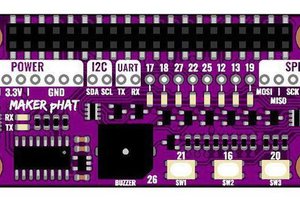One of the challenges with this circuit comes from the fact that the output of the PIR sensor is VERY small (uVolts) and so it requires significant gain to establish a detectable signal. Mounting a hi-gain circuit within centimeters of the PI Zero's WIFI antenna caused a lot of false positives due to the PIR circuit picking up noise every time the WIFI transmits.
The solution I used here was to disable the WIFI in software while monitoring the PIR. If motion is detected the Pi will enable the WIFI, send out the file via SCP or email, then disable the WIFI and go back to 'listening mode'. If a user needs to get into the Pi via SSH, pressing either one of the buttons on the side of the box will bail out of the Python script and let the user get access. Pressing both buttons will cause the Pi to execute a 'sudo halt' command so that power can be removed without risking corrupting the SD card.
 roger_archibald
roger_archibald
 Mr. Sarful hassan
Mr. Sarful hassan

